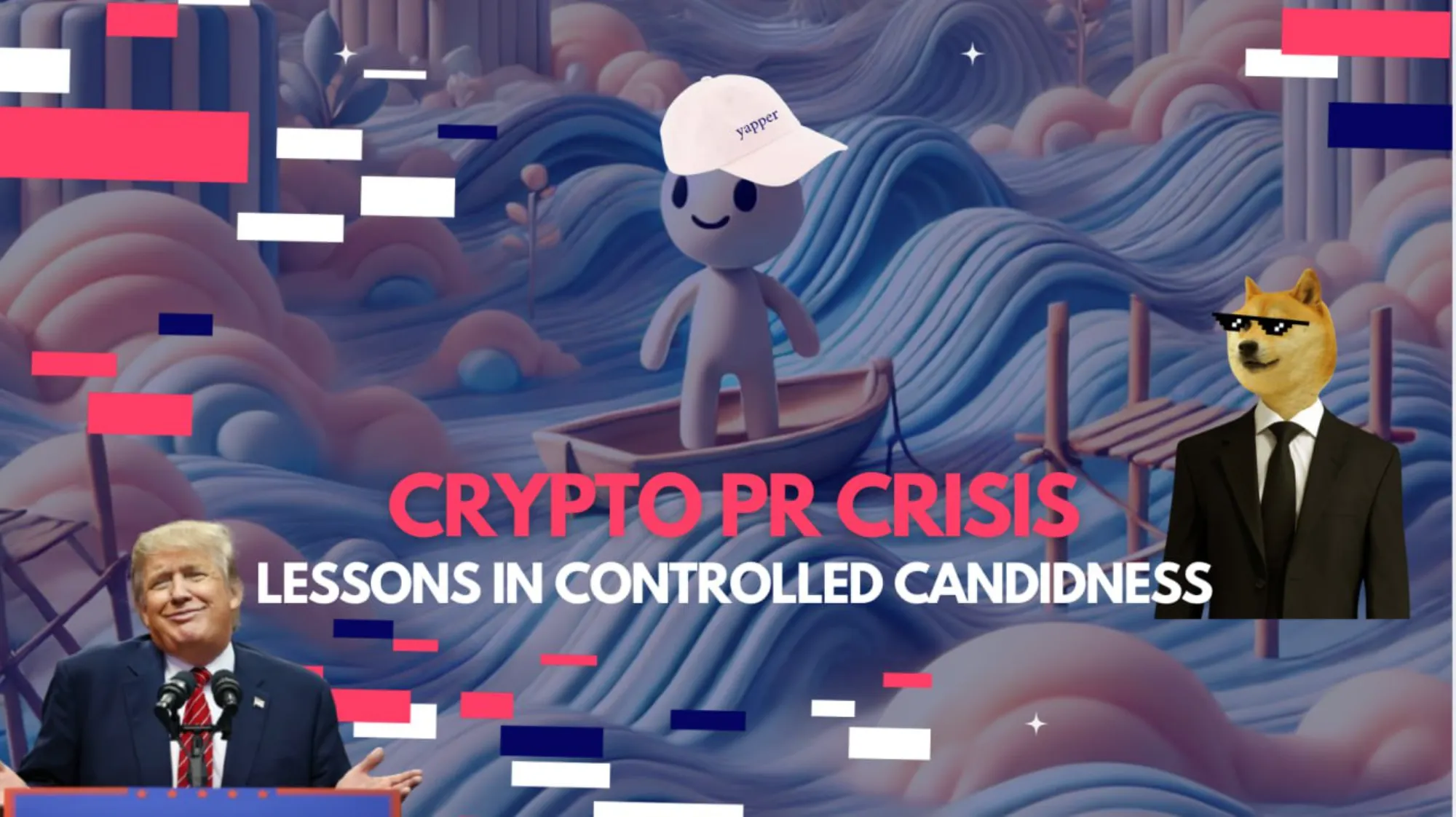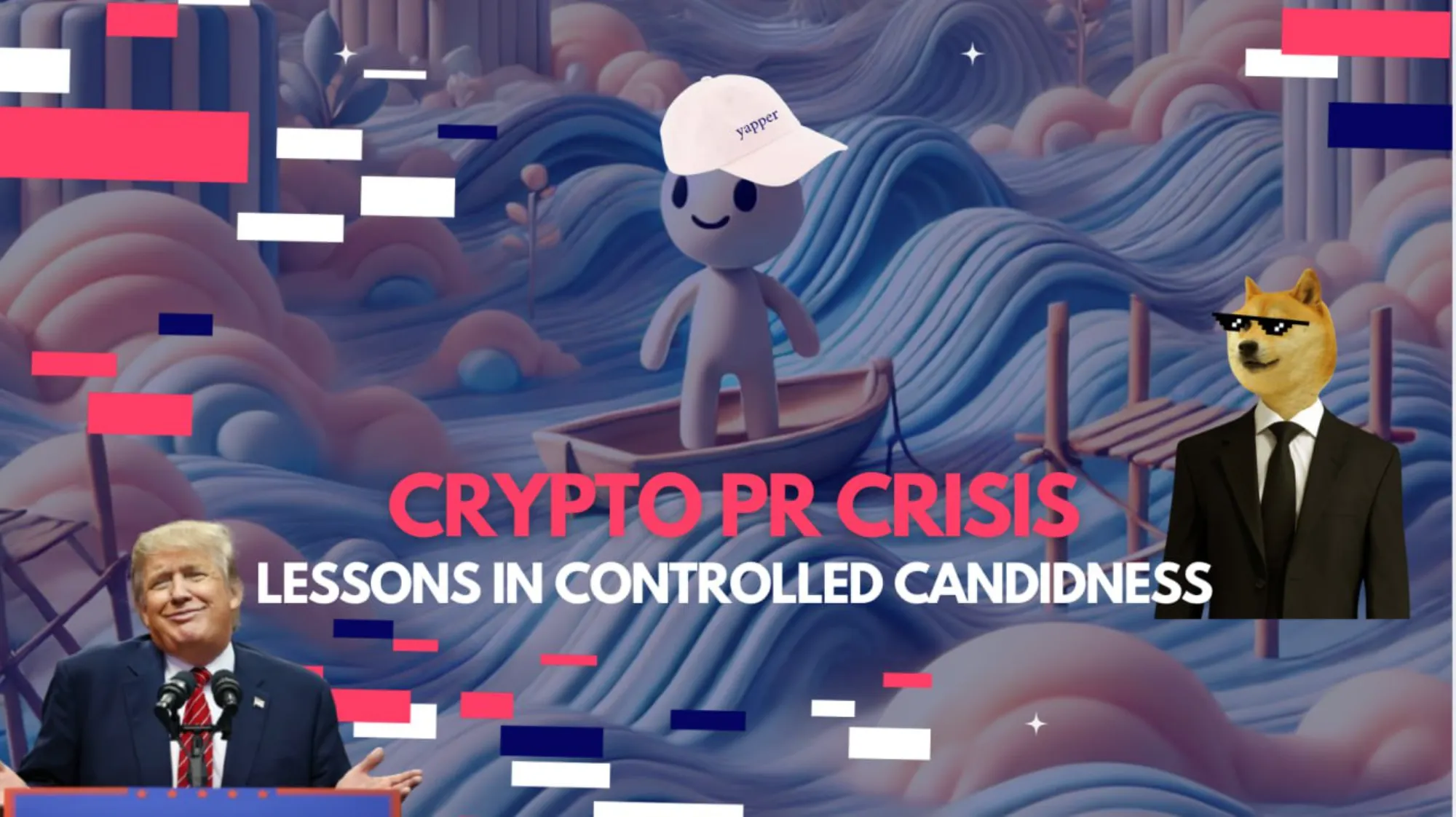
When you think of PR crises, you probably think of Kendall Jenner’s infamous Pepsi ad, Facebook’s Cambridge Analytica scandal, or even the cancellation of Victoria’s Secret’s iconic runway show. What do these crises have in common? Despite the initial fallout, all three companies survived. They may not be as popular (think the VS 2024 show), but they’re still around and kicking.
While public trust may have been shaken, they weathered their respective storms through well-thought-out crisis management strategies. Each response included a public apology, brand repositioning, and careful evaluation of their messaging—all executed by experienced professionals. A key takeaway from these examples is the importance of the “3 A’s” in PR crises: Accept, Acknowledge, and Affirm. (Obsidian PR)
In the world of Web3 and crypto, however, PR crises take on a different form. Most crypto-native projects are always one misstep away from falling prey to negative stereotypes that hound the industry: hype-driven projects and the shadow of scams looming on every corner. How does an authentic and honest project shine while efficiently managing unfortunate, uncontrollable, and sometimes unavoidable crises?
Let’s look at two PR crises that impacted the industry last year and examine how the projects fared against these challenges:
Scroll: Turning Frustration into Support
In October 2024, Scroll, an Ethereum layer-2 network, launched its native token, SCR, through an airdrop. The event drew criticism from the community, with accusations of “predatory” practices. Allegations surfaced that the team had allocated tokens to their own wallets and sold them, leading to a significant price drop.
Scroll took the backlash head-on by actively engaging with the community. The team appeared on podcasts and engaged with the community to present their side of the story. Over time, they managed to neutralise the negative sentiment. By embracing controlled candidness—transparent yet carefully crafted communication—Scroll turned frustration into support, demonstrating the power of openness in crisis management.
EigenLayer: A Masterclass in Accountability
EigenLayer, a restaking protocol, faced its own controversy when prominent Ethereum Foundation researchers Justin Drake and Dankrad Feist publicly announced their advisory positions with EigenLayer, receiving significant allocations of EIGEN tokens as compensation.
The substantial token allocations raised concerns within the Ethereum community about potential conflicts of interest. Critics feared that such financial incentives could unduly influence the researchers’ decisions and posed a threat to Ethereum’s decentralized nature.
In response to the controversy, both researchers stepped down from their advisory roles and apologized to the Ethereum community, acknowledging that accepting the advisory roles was a mistake. Their resignations underscored the importance of transparency and the need to address potential conflicts of interest. As a result, the Ethereum Foundation implemented a conflict-of-interest policy to prevent similar situations in the future (CoinTelegraph). EigenLayer’s handling of the crisis is a textbook example of accountability, transparency, and the long-term benefits of doing the right thing.
Key Takeaways for Crypto Crisis Management
The challenges of managing PR crises in the crypto space are unique, but the lessons from these examples are universal:
1. Communicate Transparently and Promptly
Delays and crises are inevitable, but timely and honest communication can prevent them from escalating. Controlled candidness is crucial here: balance transparency with a clear, strategic approach.
2. Put People at the Forefront
People connect with people. Humanize your response by letting team members address concerns directly. Media training ensures spokespeople convey both empathy and authority.
3. Own Mistakes and Share Lessons
Mistakes happen. Acknowledge them, apologize, and demonstrate your commitment to improvement. This not only rebuilds trust but also sets a standard for integrity in the industry.
By embracing these strategies, crypto projects can turn PR crises into opportunities to strengthen their relationships with communities and establish themselves as trustworthy players in an often-sceptical industry. Controlled candidness helps projects navigate challenges with authenticity and professionalism.


